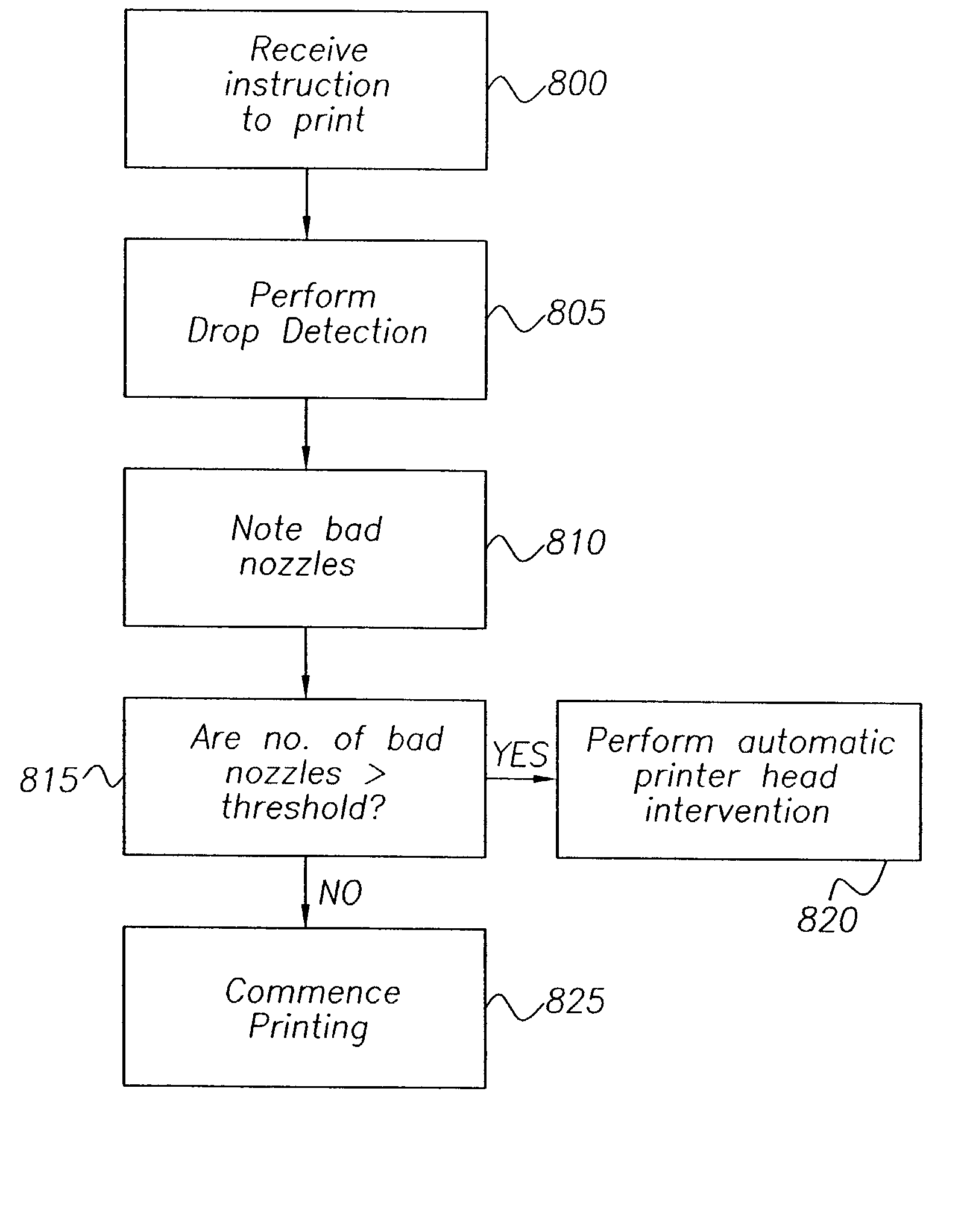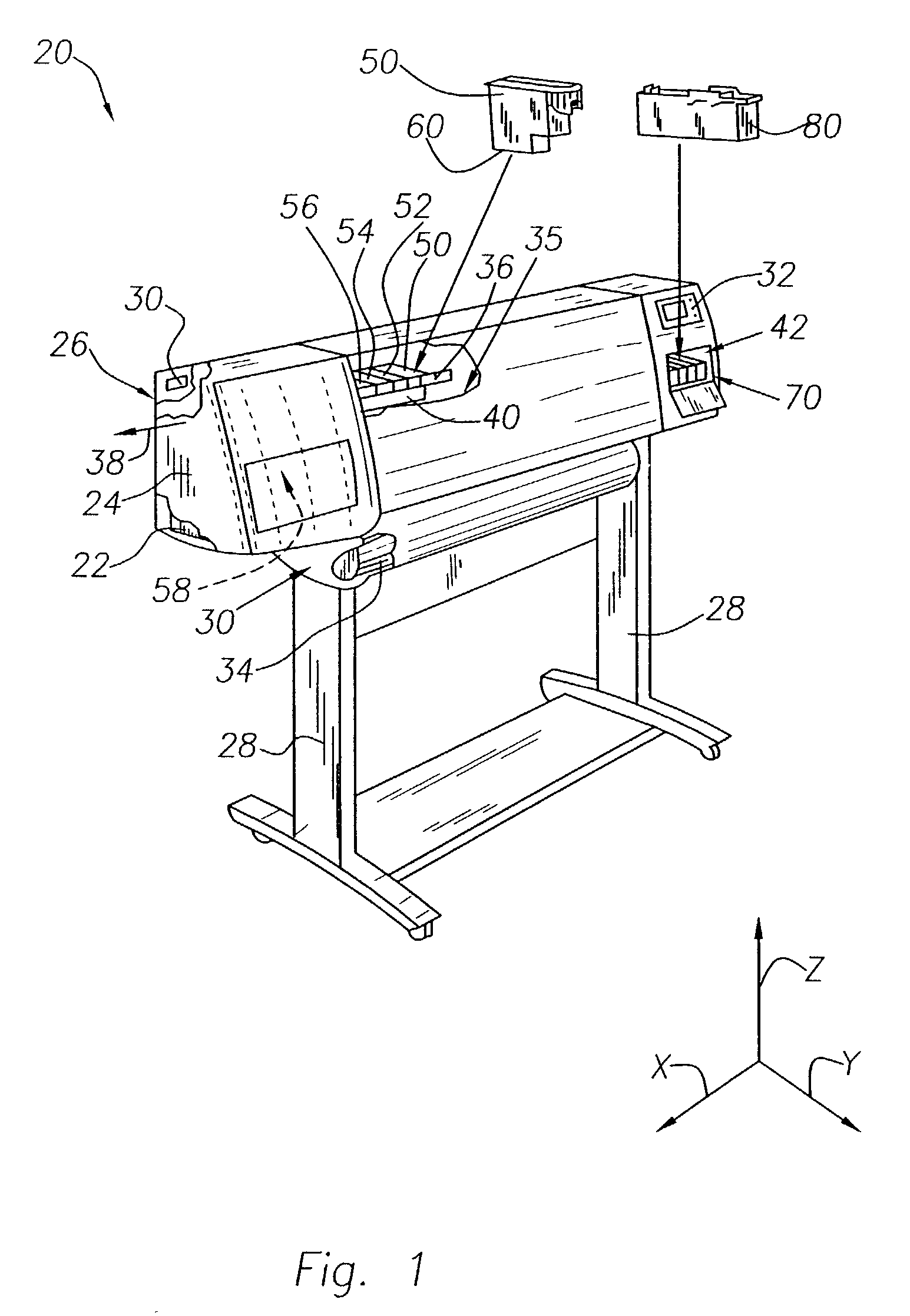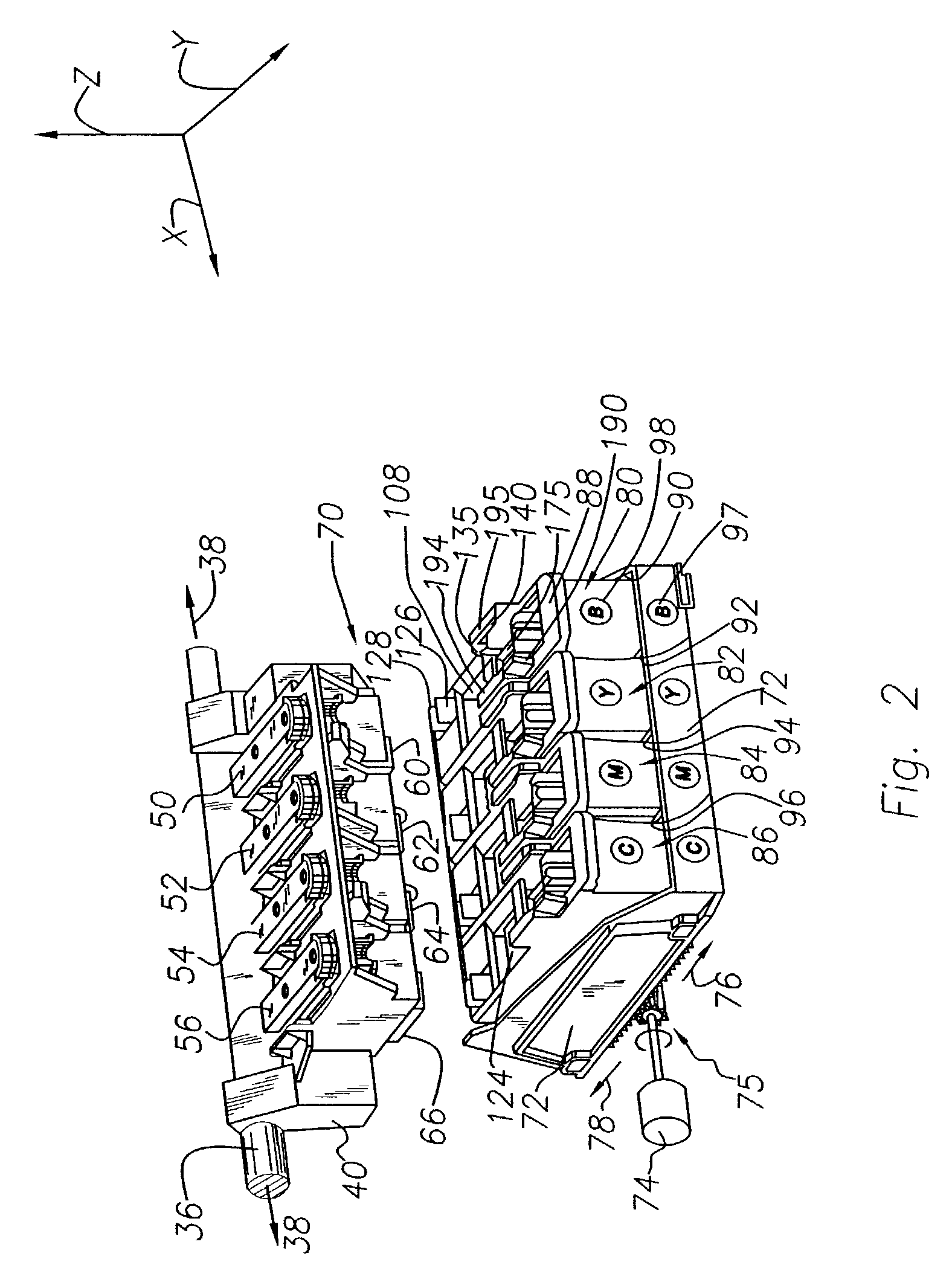Method of servicing a pen when mounted in a printing device
a printing device and pen body technology, applied in printing, other printing devices, etc., can solve the problems of affecting the quality of output, the orifice plate of the printhead, and the accumulation of excess dried ink around the printhead,
- Summary
- Abstract
- Description
- Claims
- Application Information
AI Technical Summary
Benefits of technology
Problems solved by technology
Method used
Image
Examples
first embodiment
[0049] FIG. 1 illustrates an inkjet printing mechanism, here shown as an inkjet printer 20, constructed in accordance with the present invention, which may be used for printing conventional engineering and architectural drawings, as well as high quality poster-sized images, and the like, in an industrial, office, home or other environment. A variety of inkjet printing mechanisms are commercially available. For instance, some of the printing mechanisms that may embody the present invention include desk top printers, portable printing units, copiers, cameras, video printers, and facsimile machines, to name a few. For convenience the concepts of the present invention are illustrated in the environment of an inkjet printer 20.
[0050] While it is apparent that the printer components may vary from model to model, the typical inkjet printer 20 includes a chassis 22 surrounded by a housing or casing enclosure 24, typically of a plastic material, together forming a print assembly portion 26 o...
embodiment 50
[0121] The process start at step 1100 when the signal to start printing a plot is sent to the printer 20. At this stage a lightweight servicing step 1180 is executed. A lightweight servicing may include conventionally spitting a predetermined number of droplets into the spittoon 108. According to the time the pen rested in the service station capped, an higher predetermined number of droplets may be spitted and a conventional wiping step can be also added. At step 1110 a drop detection process is performed, as described previously described, on the printhead 400. At test 1120 it is verified if the number of nozzles out of the nth percentile, in this embodiment 50, of the drop detection history is below a predetermined Recovery threshold value, here 2 if the printhead pertains to the black pen or 6 if the printhead pertains to the for color pens, or the last drop detection has revealed a current number of nozzles out is smaller than a predetermined End of Life threshold value, here e...
second embodiment
[0194] In accordance to the invention, the end of life of a printhead is reached when DDnth value will be at least equal or bigger than the End of Life Threshold which in this embodiment is 5 for a black printhead and 8 for a color printhead.
[0195] After some tests the Applicant has observed that the result of a single drop detection step may not provide a real picture of the trend on the functionality of a pen. FIG. 16 shows how may vary the numbers of nozzles out detected, reporting each drop detection measured, based on the usage of the pen (number of drops fired). In FIG. 17 it is shown how considering DD3rd as the number of nozzle out detected for each drop detection provides a clearer picture of the variation of the capabilities of the pen. It should also be noted that DD3rd is increasing and approaching the End of Live Threshold after about 50 million drops per nozzle. The skilled in the art should appreciate how, according to FIG. 16, the first time that the actual number of...
PUM
 Login to View More
Login to View More Abstract
Description
Claims
Application Information
 Login to View More
Login to View More - R&D
- Intellectual Property
- Life Sciences
- Materials
- Tech Scout
- Unparalleled Data Quality
- Higher Quality Content
- 60% Fewer Hallucinations
Browse by: Latest US Patents, China's latest patents, Technical Efficacy Thesaurus, Application Domain, Technology Topic, Popular Technical Reports.
© 2025 PatSnap. All rights reserved.Legal|Privacy policy|Modern Slavery Act Transparency Statement|Sitemap|About US| Contact US: help@patsnap.com



